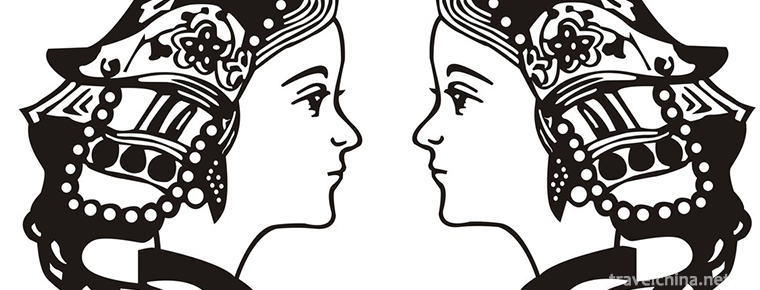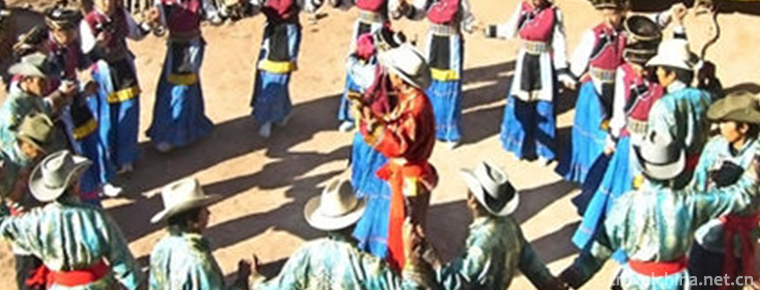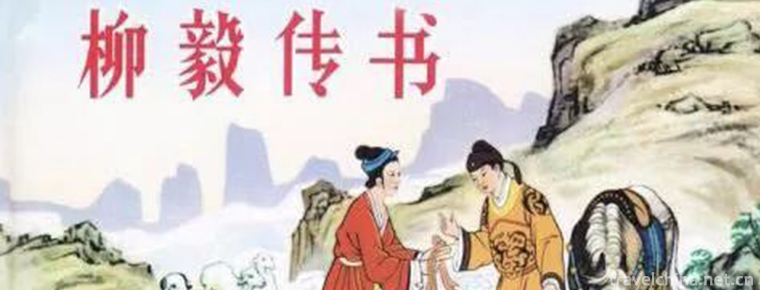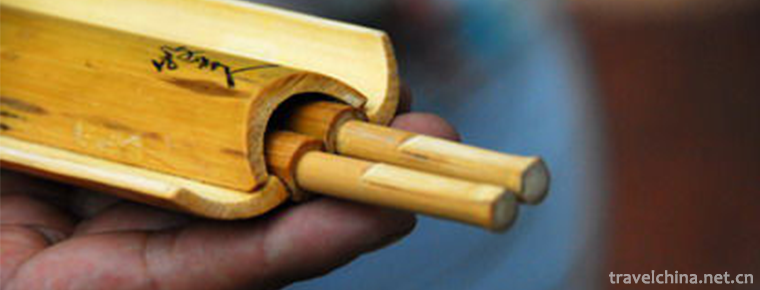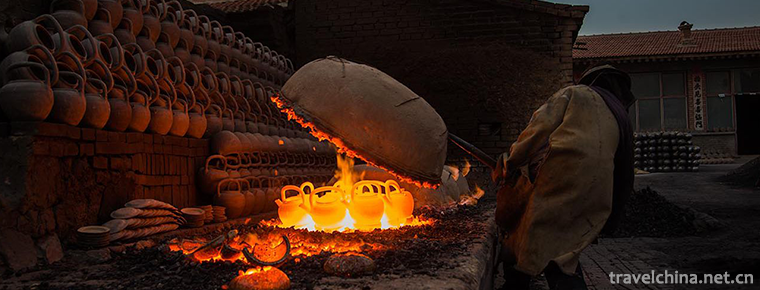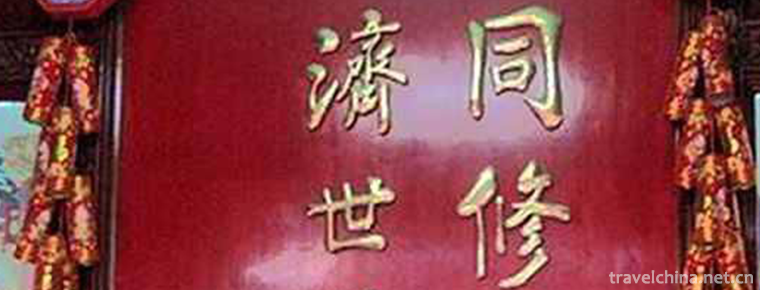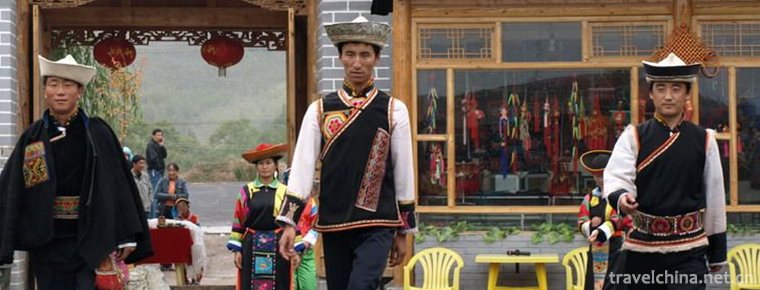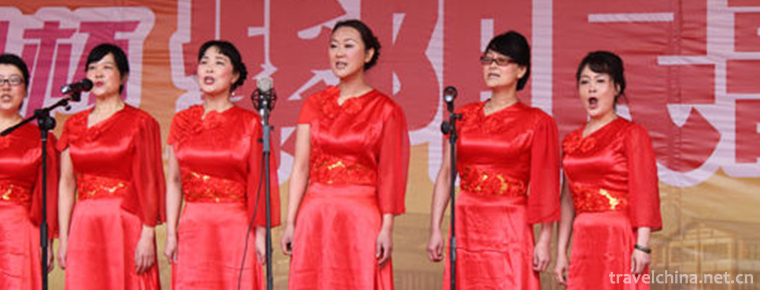XiShuangBanNa Tropical Botanical GardenChines
Xishuangbanna Tropical Botanical Garden of the Chinese Academy of Sciences, National AAAAA Tourist Scenic Area, is located in Huludao, Mengla Town, Mengla County, Jinghong City, Xishuangbanna Dai Autonomous Prefecture, Yunnan Province, China. It is the largest botanical garden with the richest collection species and the largest botanical parks in China. It is also a comprehensive research institution and scenic name integrating scientific research, species conservation and popular science education. Sheng District.
Xishuangbanna Tropical Botanical Garden of the Chinese Academy of Sciences, formerly founded by Professor Cai Xitao in 1959, was named Xishuangbanna Tropical Botanical Garden of the Chinese Academy of Sciences after several reorganizations and changes of membership.
On March 28, 2017, the Xishuangbanna Tropical Botanical Garden of the Chinese Academy of Sciences was selected by the State Tourism Administration and the Chinese Academy of Sciences as "the first ten science and technology tourism bases in China".
Historical evolution
In May 1958, Xishuangbanna Tropical Botanical Garden was built in Jinghong Damenglong Street, Xishuangbanna. It was moved to Menglun Town, Mengla County, at the end of 1958 because of its close proximity to the border and social security.
On January 1, 1959, Xishuangbanna Tropical Botanical Garden was officially established in Huludao.
From 1959 to June 1970, the establishment of Xishuangbanna Tropical Botanical Garden of the Chinese Academy of Sciences was affiliated to the Kunming Institute of Botany of the Chinese Academy of Sciences.
In July 1970, with the approval of the State Council, the local government was decentralized and renamed "Yunnan Institute of Tropical Botany" under the leadership of the Yunnan Science and Technology Commission.
In March 1978, it was admitted to the Chinese Academy of Sciences with the approval of the State Council and renamed "Yunnan Institute of Tropical Botany, Chinese Academy of Sciences", directly under the leadership of the Chinese Academy of Sciences.
In January 1987, the Chinese Academy of Sciences adjusted the system of three biological institutions in Yunnan. Except for the lab of experimental plant communities, which was assigned to Kunming Institute of Ecology, Chinese Academy of Sciences, the rest were merged into Kunming Institute of Botany, and the name of Xishuangbanna Tropical Botanical Garden was restored. The system belonged to Kunming Institute of Botany, Chinese Academy of Sciences.
In January 1987, the Plant Community Room of Yunnan Institute of Tropical Botany of Chinese Academy of Sciences and the Ecology Room of Kunming Branch of Kunming Academy of Sciences merged to establish the Kunming Institute of Ecology of Chinese Academy of Sciences, and the rest became Xishuangbanna Tropical Botanical Garden under the jurisdiction of Kunming Institute of Botany of Chinese Academy of Sciences.
The Xishuangbanna Tropical Botanical Garden under the jurisdiction of the Kunming Institute of Botany and the Kunming Institute of Ecology were merged into the Xishuangbanna Tropical Botanical Garden, an independent research institution of the Chinese Academy of Sciences, with the approval of the Central Editorial Office in September 1996.
At the end of 1998, Xishuangbanna Tropical Botanical Garden of the Chinese Academy of Sciences became one of the first pilot units of the Knowledge Innovation Project of the Chinese Academy of Sciences.
In July 2011, Xishuangbanna Tropical Botanical Garden of Chinese Academy of Sciences became a national 5A tourist attraction.
Tourism information
Main attractions
Tropical Rainforest Scenic Spots
Tropical rainforest area covers an area of about 80 M. It is used for ex-situ and in-situ conservation of plants in Xishuangbanna and its surrounding areas, including 7 Tropical Botanical gardens/areas, such as Jiangyuan, Tiannan Star Garden, Orchid Garden, Pteridophyte Area and Wild Flower Area. More than 2000 species of seed plants are preserved, of which more than 100 species are rare and endangered. The primitive tropical rain forests in the core area show the typical characteristics of the tropical rain forests, such as slab roots, strangulation, old stems and flowers, aerial gardens and large woody vines hanging in the sky, and mangroves and dew trees reflecting the geological and historical changes of the area. It is a comprehensive platform integrating species collection, conservation, scientific research and environmental education.
Celebrity Tree Garden
Celebrity Tree Garden was established in 1999, covering an area of 55 mu, collecting and displaying 275 species or varieties of tropical plants. The park includes Acacia trees planted by Jiang Zemin, Tielimu planted by Li Peng and Ficus microcarpa planted by Li Ruihuan. The "giant tropical rainforest" planted by Prince Philip, the World Wildlife Foundation is Wangtianshu, the black sandalwood planted by Prince Qiu Xiaogong of Japan, the sawn-leaf bamboo knot tree planted by Lu Jiaxi, the president of the Chinese Academy of Sciences, the celestial timber planted by Zhou Guangzhao, and Yongxiang Lu, the president of the Academy of Sciences. Comrade's hand-planted dragon blood tree and so on. Professor Cai Xitao, the founder and first director of the garden, planted dragon blood tree. Pei Shengji, the second director, planted Wild Litchi and Xu Zaifu, the third director, planted iron wood. The garden also has a "Spectrum of Xishuangbanna Tropical Botanical Garden" which shows the history of the botanical garden. It commemorates the stone sculpture of Professor Cai Xitao, the founder of the garden, Shuhai Hang. In this garden, a variety of exotic flowers and trees have been collected, such as the Cambodian Dragon Blood Tree, discovered by Professor Cai Xitao and planted by Professor Cai Xitao, which can extract the precious South medicine "the Holy Drug of Activating Blood", and the Dai Bay-leaf brown, peacock in the shape of an open screen, traveling banana in the desert, the world's most poisonous plant, known as the "bloodletting throat" - poisonous arrowhead, old stem flowers edible - sparkling, trumpet-like mandala, beautiful yellow reeds with Fragrant Hill red leaves and golden banyan with different shapes and colors. In the garden, there is also the oldest iron tree in Xishuangbanna, the Millennium iron tree king of dioecious plants.
Bamboo Garden
Xishuangbanna Tropical Botanical Garden of Chinese Academy of Sciences was built in 1965 with an area of 104 Mu and more than 250 species of bamboo introduced and cultivated. Bamboo species are collected from southern Yunnan, Guangdong, Guangxi, Hainan and tropical countries in Southeast Asia. Among them, there are many precious bamboo species, such as Giant Dragon Bamboo with 25 cm stem diameter, Buddha belly bamboo with Buddha belly between bamboos, yellow and green green green green green green green green green green green green green green green green green bamboo, sticky rice carnation bamboo used by local Dai people for bamboo tubular rice meal, more rare climbing tree twisted rattan bamboo and dense Dai bamboo. Fengwei bamboo with ethnic flavor.
National Tree Garden
National Tree Garden was established in 1999. It is divided into six regions: Asia, South America, North America, Oceania, Africa and Europe. It covers a total area of 20 mu and collects 58 species of national trees and flowers suitable for local growth in 80 countries. Such as Myanmar National Flower-Dragon Boat Flower, Lao National Flower-Egg Flower, Libyan National Flower-Pomegranate Flower, Madagascar National Flower-Phoenix Wood, Belgian National Flower-Rhododendron, etc., and through the text and popular science explanation, the public can learn more about the customs, cultural traditions, geomorphology and other knowledge of various countries.
- South Yunnan Tropical Wild Flower Garden
The garden covers an area of 31 mu. The germplasm resources of wild flowers in southern Yunnan (generally referred to as tropical and subtropical Yunnan) were collected, and about 250 species of 65 families of wild ornamental flowers were collected and preserved. The garden fully utilizes the principles of community ecology, and scientifically and reasonably allocates arbors, shrubs, grasses, vines and other plants. With 10 mu of water as a backdrop, the landscape is unique. The park has become a special park integrating plant germplasm conservation, scientific research, popular science education and ecotourism.
Ex-situ protected areas for rare and endangered plants
As of September 2015, the park's ex-situ protected area of rare and endangered plants covers an area of 90 meters. In 1974, it was planned for the conservation and construction of rare and endangered plants and the diversity of tropical rainforest. Through decades of collection, protection and construction, there are more than 3000 species of higher plants, including about 1500 species of introduced plants, and more than 100 rare and endangered plants and key protected plants in China. In addition, Forest Ecosystem Observation towers and surface runoff observation stations for ecological research have been built in the area. At the same time, some special botanical parks have been built, which not only preserve species but also enrich the content of popular science education. The forest community in this area is marked by four trees and longan. There are also typical tropical rainforest landscapes such as old stems, blossoms, strangulation, stand-alone forests, roots and so on. The area has become an important base for the study of ecology, forest ecology and biodiversity conservation.
Wild
Orchid Garden
Wild orchid garden covers an area of 9.08 mu. It was established in 2000 to protect and study orchid resources. It mainly studies the introduction, domestication, conservation, cultivation and biological characteristics of orchids. Nearly 200 species of wild orchids, including Dendrobium, Wandai Orchid, Hedinglan, Bamboo Shoot Orchid, Fritillaria, Nail Orchid, Spider Orchid, Phalaenopsis, Lentinus, Hydrangea, Shrimp-spined Orchid, Bamboo Leaf Orchid, Mercury Orchid, Hydrangea and Bauhinia, were collected and preserved. This area has become an important base for orchid research in China.
- Wooden Garden with Wonderful Flowers
Wood Garden with exotic flowers was built in 1999 and covers an area of 12 mu. It mainly collects tropical exotic flowers and trees and displays them to the public in the way of gardening. It plays an important role in popularizing botanical and ecological knowledge. The garden is divided into fruit-viewing plant area, herbaceous plant area, mosaic plant area, induction plant area and ornamental stem plant area. 254 species (varieties) of exotic flowers and exotic trees are collected. Among them are the carefree flowers of the old stem flowering plants, the mysterious fruit of the ornamental plant, the woody milk fruit, the cocoa, the balloon fruit, the milk tomato, the inflated stem ornamental plant, the wine bottle brown, the wine bottle orchid, the elephant leg tree, the Buddha belly, the turtle of the tuber and tuber, the largest flower of the world, the aristolochia, the whisker-like old tiger beard, the felis grass, the fantastic flower-shaped passionflower, the gold. Cup flower, double-petal paper fan, shrimp and sunflower, mosaic plant, red mulberry, white agave, etc., induction plant dance grass, Mimosa tree, clock flower, light wood, national protection plant, such as cannabis.
- Wild Edible Botanical Gardens
Supported by the Science and Technology Innovation Project of the Chinese Academy of Sciences, the park was built in three years from 2009 on the basis of the original wild vegetable and plant garden. The Park covers an area of about 150 mu. More than 400 species of wild edible and cultivated plant relatives are collected and preserved in wild fruit-eating area, flower-eating area, stem-leaf area and root-eating area respectively. The related species of wild cultivated plants are dotted in each area. As of September 2015, this park has the largest collection and preservation of wild edible plants in the world.
- Aquatic Botanical Gardens
The aquatic botanical garden covers an area of 15 mu, collecting and displaying a wide variety of aquatic plants in tropical areas, and now it has collected and preserved about 100 species (varieties). The garden planted different life forms of aquatic plants according to water-wet environment such as water depth and plant ecological habits, including floating-leaf plants, plant roots or underground stems, stems growing in water, petiole length can be extended with water level, leaves and flowers floating on the water surface of aquatic plants, such as Wang Lian, water lily, Scutellaria baicalensis, Pennisetum vulgaris. Floating plants - plants floating on the water as a whole, roots not born in mud, can drift around with the flow of water, such as rainy chrysanthemum, ManJiang hong, water hyacinth, Sophora japonica, azolla, big drift, kohlrabi, Chinese cabbage. Submerged plants - complete aquatic plants, most of the life cycle of plants submerged life, they mostly live in deeper water, roots grow in the soil, leaves are usually linear, banded, such as goldfish algae, civet algae, black algae. Euphorbia --- aquatic plants whose bottom or base is submerged in water, whose roots or underground stems grow and develop in mud, and whose upper plants rise out of water, usually in shallow water or near water. Such as lotus, papyrus, borderland sedge, scallion, long-knotted light bamboo taro, white powder Tariya, taro, aquatic horseshoe, Sargenner's rhizome, Alisma orientalis, yellow iris, Chinese kale, sugarcane grass, calamus, Cigu, yellow iris. Waterfront plants - grow in wet places on banks or embankments, like metasequoia, larch, Pinus tabulaeformis, hibiscus, etc.
Greenstone Forest Reserve
The greenstone forest scenic area of
Xishuangbanna Tropical Botanical Garden of the Chinese Academy of Sciences
covers 225 hectares and is located in the eastern part of Huludao Island. The
natural environment is beautiful. The forest coverage rate is over 90%. Typical
limestone mountain forest vegetation grows over 1000 higher plants and inhabits
hundreds of wild animals. There are many pictographic rocks and lush rainforest
trees and rocks in the area, which constitute a rare "forest on the
ground, Stone Forest on the bottom" spectacle in the world, so it is
called "green stone forest". Greenstone Forest Scenic Area is a
primitive habitat for many rare and endangered animals, such as rhinoceros,
langur, monkey, gibbon and so on. It also has abundant tropical orchid plant
resources. It is a demonstration base for carrying out the return and
comprehensive protection of these rare and endangered animals and plants.
Hundred Gardens
Baiyuan Garden is the first landscape of Xishuangbanna Tropical Botanical Garden of Chinese Academy of Sciences. It covers an area of 353 mu. Now 645 species of tropical flowers and plants are collected, preserved and displayed. The plant scenery of Baiyuan Garden is mainly displayed by means of solitary planting, large-scale planting of pure forest, centralized collection of similar varieties, special preservation, climbing and aquatic flower plants. And strive to skillfully combine with the topographic waters, forming different viewing spaces, creating "Tiannu scattered flowers", "layers of forest dyed", "colorful" and "flowers blossom and fall" and other landscape effects. With the help of a large number of flowers and plants in the area, through excavating the relationship between flowers and people's daily life, beliefs and emotions, as well as the literary works such as legends, poems and other literary works created by literati and ink-writers from ancient to modern times, they are displayed in the park in the form of antithetical couplets, calligraphy, paintings and plaques, fully displaying the scientific and cultural connotations of flowers and plants.
Passion Garden
Baixiang Garden covers an area of 86 mu, and more than 104 species of important spice plants are introduced and preserved at home and abroad. There are world-famous spice plants such as ylang, clove, sandalwood, earthy aloes, vanilla, nutmeg, Peruvian incense, Turu incense, Dalbergia odorifera, Ceylon cinnamon, cinnamon, brandy and so on. They also preserve important local spice plants, such as camphor with high content of acacillol, vanillin, linalool and methyl eugenol; Gironella with high content of citral, and camphor with high content of safrole. Among them, many of them are endemic to Yunnan and rare spice plants in the world. They have great potential for development and utilization. In addition, there are many traditional national food spices, such as citronella grass, coriander, etc., which are commonly used as the local Dai barbecue flavoring materials, and Yunnan catalpa flower, which is the most important fragrance plant living gene pool in China.
Wild Ginger Garden
The Xishuangbanna Tropical Botanical Garden of the Chinese Academy of Sciences has been collecting, domesticating and preserving ginger plants since 1960s, mainly focusing on ex situ conservation of tropical and subtropical wild ginger germplasm resources in China and Southeast Asian countries. The garden covers an area of about 100 mu and preserves more than 170 species of wild ginger plants belonging to 16 genera. Among them, there are rare and endangered plants such as Fennel, Cardamom, Ginger, Menghai Ginger, and important Chinese herbal medicines such as Amomum, Alpinia, Alpinia, Curcuma, Curcuma, Curcuma obtusifolia and so on. In addition, there are also spices, pigments, starches, vegetables and beautiful ornamental gingers. Plants. The Wild Ginger Garden of Xishuangbanna Tropical Botanical Garden of the Chinese Academy of Sciences has become an important base for the research on the classification, phylogeny, pollination biology, ecology, phytochemistry, development and utilization of Gingeraceae in the world.
Ticket Price
The ticket system of Xishuangbanna Tropical
Botanical Garden of the Chinese Academy of Sciences has been implemented. The
ticket price is 104 yuan per person. The ticket-free policy is implemented for
the elderly over 70 years old, active servicemen, disabled persons and children
under 1.2 meters. Preferential ticket policies are given for students, 60-69
years old, winter and summer camps, creative sketches, wedding dress shooting
and tourism teams. According to the relevant regulations, the park's ticket
prices are reduced by 20% during the Spring Festival, May Day and National Day,
and are implemented at 83 yuan per person. Tourists can choose to book/pay
tickets through the travel website. Tourists who book in advance can enjoy a
discount price of 94 yuan per person. In addition, the Ministry of Science
Popular Tourism of the park also regularly promotes preferential activities for
specific regions and special groups of people.
On October 1, 2018, tickets for Xishuangbanna Tropical Botanical Garden were reduced from 104 yuan per person to 80 yuan per person.
Traffic routes
At Jinghong Bus Passenger Station, ride to Menglun and Mengla and get off at Menglun. The fare is 16-20 yuan, and the journey is about 1 hour and 10 minutes. Starting from Kunming and Pu'er, you can take a train to Mengla and get off at Menglun Town. It takes 10 minutes to walk from Menglun Passenger Station to the suspension bridge. After buying tickets, the suspension bridge is the scenic spot.
Xishuangbanna Tropical Botanical Garden of the Chinese Academy of Sciences has been awarded "National Knowledge Innovation Base", "National Environmental Protection Science Popularization Base", "National Science Popularization Education Base", "National Youth Science and Technology Education Base", "National AAAAA Class Tourist Scenic Spots", "National Civilization Unit", "Yunnan Top-quality Science Popularization Base by the government departments at all levels. Honorary titles such as "land".
















-
Ah Shi Ma
Ashima, a traditional folk literature in Shilin Yi Autonomous County, Yunnan Province, is one of the national intangible cultural heritage..
Views: 229 Time 2019-03-28 -
Manufacturing Techniques of Spotted Copper
The bronze production technology, the traditional handicraft of Qujing City, Yunnan Province, is one of the national intangible cultural heritage..
Views: 145 Time 2019-04-03 -
Dulong Kakuwa Festival
Dulong Kakuwa Festival spreads in all Dulong villages in the Dulong River Valley in the west of Gongshan Dulong Nu Autonomous County, Nujiang Lisu Autonomous Prefecture.
Views: 148 Time 2019-04-28 -
Martial arts
Jingwu Sports Association originated from Huo Yuanjia's elite gymnastics school founded in Shanghai in 1910. It is a mass martial arts organization with the main activities and tasks of teaching.
Views: 220 Time 2019-05-08 -
Legend of Liu Yi
The legend of Liu Yi's biography is one of the oldest popular folklores in Chinese history. With Liang Zhu, Tianxian Pair and White Snake Legend, they are called the four legends of Chinese folklore. .
Views: 171 Time 2019-05-14 -
Running curtain
Running curtain originated in the Spring and Autumn Period and Warring States Period, formed in the Qin and Han Dynasties, flourished in the Song, Yuan, Ming, Qing Dynasty and the early Republic of Ch.
Views: 332 Time 2019-06-09 -
Performing and Making Skills of Qiang Flute
Qiang flute is an ancient single-reed gas singing instrument in China. It has a history of more than 2000 years. It is popular in the Qiang people's residence of Aba Tibetan Autonomous.
Views: 159 Time 2019-06-10 -
Pottery Firing Techniques
Pottery refers to the clay as the body, processed and shaped by hand, wheel system, moulding and other methods, and baked at high temperature of 1000-1200 degrees or so. The production process of pott.
Views: 157 Time 2019-06-18 -
Tongrentang Traditional Chinese Medicine Culture
Tongrentang Traditional Chinese Medicine Culture, one of the traditional Chinese medicine, is declared by Beijing Tongrentang (Group) Co., Ltd., one of the national intangible cultural heritage..
Views: 190 Time 2019-06-21 -
Tu Costume
Women usually wear embroidered small collar and long slant-skinned shirt. The sleeves are made of red, yellow, orange, blue, white, green and black seven-color cloth rings. They are bright and beautif.
Views: 187 Time 2019-06-23 -
Ziyang Folk Songs
Ziyang Folk Song is the general name of traditional folk songs spread in Ziyang County, Shaanxi Province, and it is the most representative of traditional folk songs in southern Shaanxi Province. It h.
Views: 347 Time 2019-08-16
